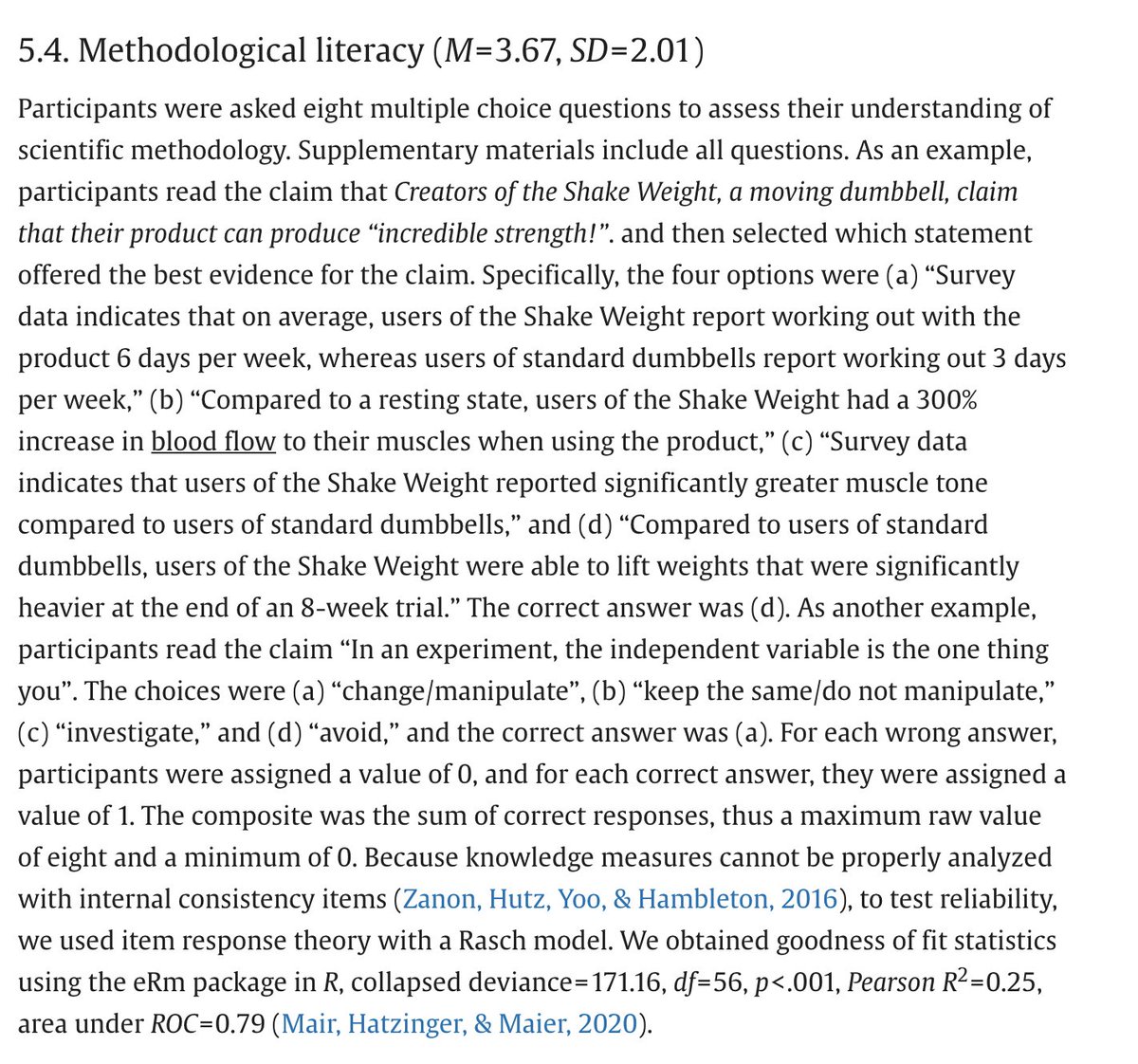🚨 BREAKING 🚨
Scientists discover more thinking equals less conspiracy theories 
Well more scientists first measured dispositions of thinking in a sample of 990 people, and then developed follow up studies exploring causul relationships.
Though at first glance, question sample sizes to establish casual relationships. Seems like you want more. Always moar
The authors first define misplaced trust from the field of medical research and science
They suggest encounters with psuedoscience increase misplaced trust in conspiracy theories
Swami et al then review some basic literature around dispositions and critical evaluation and the situated nature of misplaced trust and conspiracy theories.
They include a Power Analysis for the survey. Always important. This how authors describe if their sample size is big enough.
Though researchers make assumptions when they set Cohen's f
This is a good example where a sentence backs in a ton of required background knowledge.
"we specified a Cohen's f of 0.15, for an ANCOVA with two groups. Although this analysis suggested we needed 489 participants, we collected additional participants with an expectation that some would not pass a simple attention check and thus not be included in analyses. "
Swami et al suggest a measure of "methodological literacy" which seems operationalized as how others would evaluate "critical evaluation" or "online reading comprehension"
They created a series of multiple choice questions with Item Response Measuring goodness of fit 
Their models had very significant interactions. This seems to happen quite often in measures of critical evaluation.
An interaction happens in ANCOVA when a relationship between a categorical independent variable and a dependent variable like performance is different across different levels of a continuous covariate
These models had many covariates and interactions
ANCOVA compares means of different groups on a dependent variable while controlling for the effect of a continuous covariates
You assume covariate and the dependent variable is the same for all groups, but sometimes, often that assumption is violated.
pre-tests good example
Imagine you are testing two ways to teach critical evaluation and give a pre-test.
The activities are your independent varaible and and your comprehension measure the dependent variable.
A pre-test is a covariate
This happens a lot in educational research when you can use a variable as a pre and post test.
Like Smarter Balance scores. So people use these tests, or a pre-test as a covariate
But what if one activity worked better with people who scored high? and the other with people who scored low.
That is an interaction
The authors conclude, "trust in science can leave people vulnerable to believing in pseudoscience"
I am not sure I agree with that sentiment per se. The models did have a ton of interactions.
There are some ecological validity issues as well in my opinion.
Here is the link to the article.
Need to dig into their methodology of methodological literacy more.
It is good to see the use of replication studies to scale, but the models shifted slightly so it was more a formative design rater than replicationsciencedirect.com/science/articl…
hey @threadreaderapp unroll please